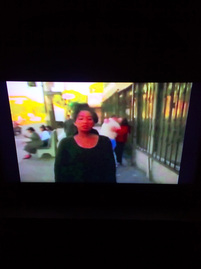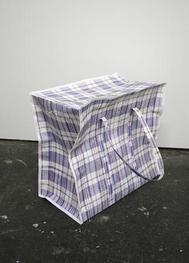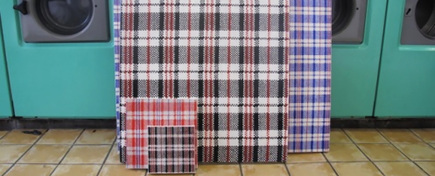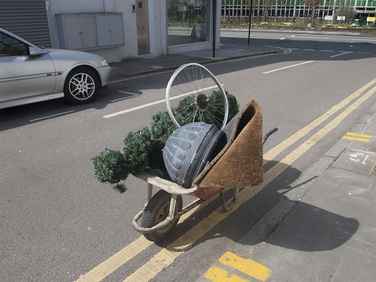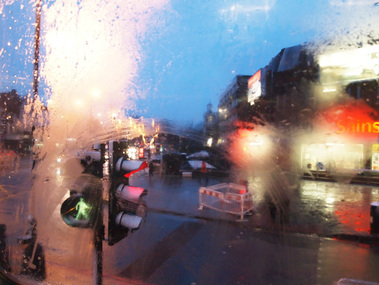| collaborative_waves_pdf_sample.pdf | |
| File Size: | 669 kb |
| File Type: | |
'Collaborative Waves' excerpt below: a meandering overview of two group exhibits 'Feedback' & 'Place of Work'
Elias Canetti’s, ‘Crowds And Power’ discusses a human need to accumulate in numbers;
“He may have lived in bands about the size of wolf-packs, but wolves were content with this and he was not... he, as it were, incorporated into himself, by transformations, all the animals he knew. It was through the development of transformation that he really became man”. 16 Taking philosophical directions from Canetti is Deleuze and Guattari’s use of the moving wolf pack to attack Freud’s oedipal reductionism in psychoanalysis. Thus the becoming of a wolf is the desire to instead be free from descriptive enclosures, only by constant interchanges; which can neatly symbolise the multiplicity of the ‘artist collective’ within societies. “To be fully a part of the crowd and at the same time completely outside it, removed from it: to be on the edge”. 17
However, the ‘pavement journeys’ of Lauren Miller’s music videos with the ‘Feedback’ group exhibition expresses the urbanised society as a pack that has become all too big and fractured, at once conformist and distant. The self aware singing artist leads us through this state of affairs and in doing so, like a pied piper, encourages us to follow and regroup. Artist groups in familiar history have been compared to this band or orchestra under the broad term of a collective; nomadic thinkers loosely assembled and differential to their time, from pre 20th century Parisians to pre-perestroika or New York in 77; using strength in numbers.
Elias Canetti’s, ‘Crowds And Power’ discusses a human need to accumulate in numbers;
“He may have lived in bands about the size of wolf-packs, but wolves were content with this and he was not... he, as it were, incorporated into himself, by transformations, all the animals he knew. It was through the development of transformation that he really became man”. 16 Taking philosophical directions from Canetti is Deleuze and Guattari’s use of the moving wolf pack to attack Freud’s oedipal reductionism in psychoanalysis. Thus the becoming of a wolf is the desire to instead be free from descriptive enclosures, only by constant interchanges; which can neatly symbolise the multiplicity of the ‘artist collective’ within societies. “To be fully a part of the crowd and at the same time completely outside it, removed from it: to be on the edge”. 17
However, the ‘pavement journeys’ of Lauren Miller’s music videos with the ‘Feedback’ group exhibition expresses the urbanised society as a pack that has become all too big and fractured, at once conformist and distant. The self aware singing artist leads us through this state of affairs and in doing so, like a pied piper, encourages us to follow and regroup. Artist groups in familiar history have been compared to this band or orchestra under the broad term of a collective; nomadic thinkers loosely assembled and differential to their time, from pre 20th century Parisians to pre-perestroika or New York in 77; using strength in numbers.
The ‘Feedback’ group’s work also appears nomadic and urbane, where this wandering of the city naturally leads us into thoughts on the Situationist ‘dérive’, in which the physical exploration of a city is also a psychological one. This psycho-geography can begin with Ivan Chtcheglov, who talks of both finding and losing yourself, in search of ‘the hacienda’ (this name would materialise 40 years later as a legendary music club in the heart of Manchester). It is about being less functional, or rather functioning as something else. But unearthing this sub conscious alone is rarely encouraged; “One can dérive alone, but all indications are that the most fruitful numerical arrangement consists of several small groups”. 18 The wider city is therefore affected by such micro movements. It is no wonder neurons are then referred to as topographic. The mind like the city model, seeks to expand by opening further grids of networks and mapped pathways. But contemporary urban remapping has entered far less spontaneous phases. From leafleting in populated areas, to spatial syntax, in which methods for measuring people flow in cities has been used to benefit stakeholders and (going full circle from the Situationist’s association with May 68) even decoding the spatial origins of the 2011 London riots.19 Showing that there will always be interest in decoding and capturing new people flows, both mentally and physically.
Sarah Barrett’s ‘Granny Bags’, whose laundry bag check designs have no beginning or end, look like urban neon grids. The grid can be found in written comparisons to modernism by Rosalind Krauss and countless artworks. 20 Another contemporary artist, Susan Collis also uses this check motif, hand drawing them onto single plain bags which makes a simulation of the ‘real thing’ initially appearing misplaced in the gallery. In recent years it has also been subject to various ‘upscaling’ in the fashion industry, like Louis Vuitton, perhaps symbolising the creative elite’s part in urban gentrification. The ordered grid is then always a modern construct; as a mapping co-ordinate for marking your place in the world.
Conversely, Sarah Barrett’s paintings initially look like they are appropriate in the gallery space but in waiting, rested against the walls, awkward, unsure whether they belong in the art world or laundry room, but existing in both anyway, as the photos suggest. Likewise, both groups transform and move their identities from employer to artist in different ways. The ‘Feedback’ group who initially had connections with artistic studies take the disparity of their employment and attempt to relocate themselves ‘back home’, which is in the temporary gallery of the university. While the ‘Place Of Work’ staff replace their associated gallery of employment with one that places them more central, creatively and physically in the middle of London. But notably it is this very association with their occupation which has enabled them to realise a temporary and combined regrouping. Both give examples for potential multiplicities and paths. A cacophony of musical frequencies travelling the same direction at different lengths, passing through mediums, never gridlocked.
In search of some hacienda.
from aaw
16) Elias Canetti, 'Crowds and Power' (Continuum, 1905) 108
17) Deleuze & Guattari, 1914: One or Several Wolves in 'A Thousand Plateaus', trans. Brian Massumi, (Continuum 2004) 33
18) "Theorie de la derive, Internationale Situationniste #2 (Paris, December 1958)" http://www.bopsecrets.org/SI/2.derive.htm
19) "London, Riots Research" 2011- http://www.spacesyntax.com/project/2011-london-riots/
20) Rosalind Krauss, Grids, MIT Press (Summer, 1979) October, Vol. 9, 52
*Susan Collis 'Jimmy; image taken from seventeen gallery website which can be found here http://www.seventeengallery.com/artists/susan-collis/
all other images used with kind permission by the artist.
Conversely, Sarah Barrett’s paintings initially look like they are appropriate in the gallery space but in waiting, rested against the walls, awkward, unsure whether they belong in the art world or laundry room, but existing in both anyway, as the photos suggest. Likewise, both groups transform and move their identities from employer to artist in different ways. The ‘Feedback’ group who initially had connections with artistic studies take the disparity of their employment and attempt to relocate themselves ‘back home’, which is in the temporary gallery of the university. While the ‘Place Of Work’ staff replace their associated gallery of employment with one that places them more central, creatively and physically in the middle of London. But notably it is this very association with their occupation which has enabled them to realise a temporary and combined regrouping. Both give examples for potential multiplicities and paths. A cacophony of musical frequencies travelling the same direction at different lengths, passing through mediums, never gridlocked.
In search of some hacienda.
from aaw
16) Elias Canetti, 'Crowds and Power' (Continuum, 1905) 108
17) Deleuze & Guattari, 1914: One or Several Wolves in 'A Thousand Plateaus', trans. Brian Massumi, (Continuum 2004) 33
18) "Theorie de la derive, Internationale Situationniste #2 (Paris, December 1958)" http://www.bopsecrets.org/SI/2.derive.htm
19) "London, Riots Research" 2011- http://www.spacesyntax.com/project/2011-london-riots/
20) Rosalind Krauss, Grids, MIT Press (Summer, 1979) October, Vol. 9, 52
*Susan Collis 'Jimmy; image taken from seventeen gallery website which can be found here http://www.seventeengallery.com/artists/susan-collis/
all other images used with kind permission by the artist.
